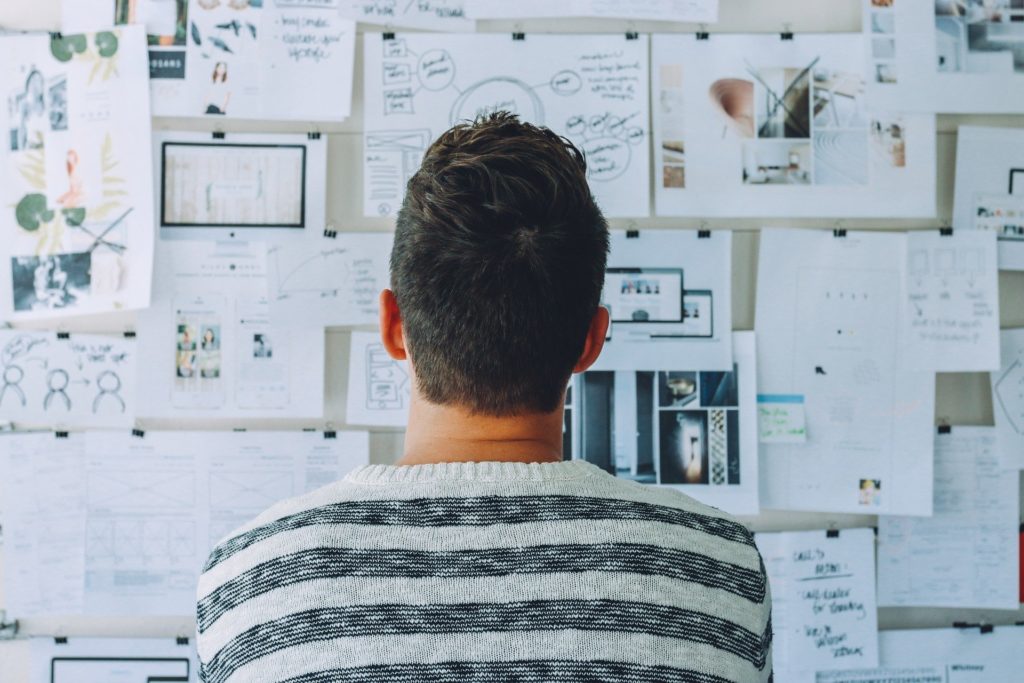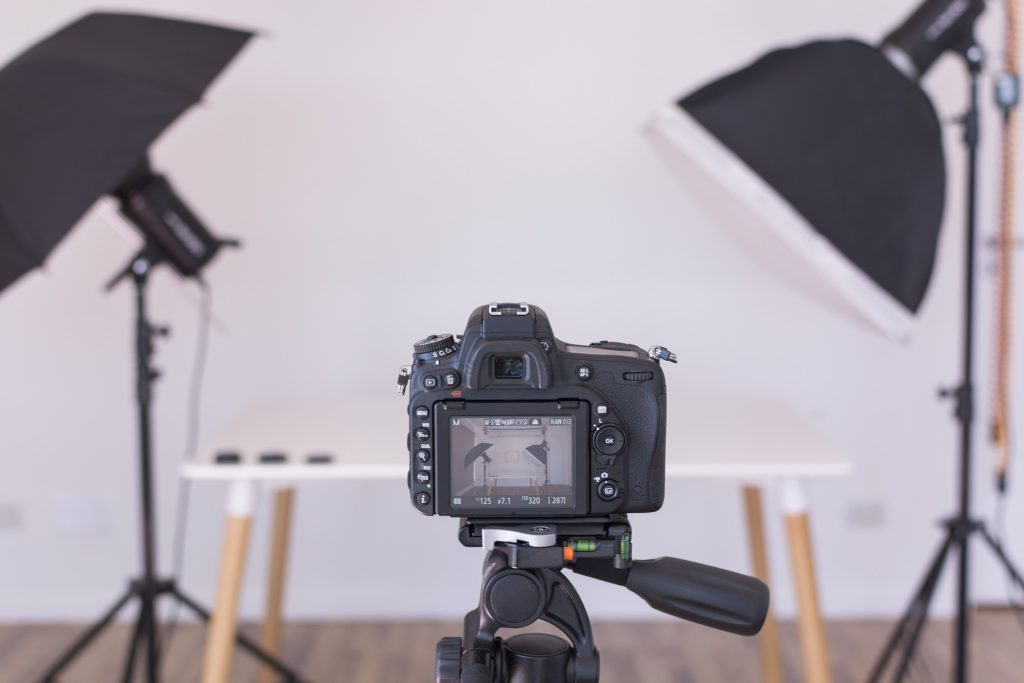Fashion photography’s origin is closely linked to art, especially in those cases in which editorial names like Vogue, Harper’s Bazaar, Vanity Fair, and more. Nowadays, fashion photography has evolved into a complex genre that scopes from sophisticated concepts published by fashion magazines to casual lifestyle imagery posted in a consistent way by highly skilled individuals.
What makes fashion in fashion photography is the unquestionable relationship it has to any of the outcomes from the fashion industry; clothes, shoes, accessories, cosmetics, and hair, all construct the iconic spirit of fashion. From models to backgrounds, they all make the necessary means for these products to tell the story in a moving and fashionable way.
Here, we’ll be sharing the seven essential tips and techniques needed for starting out today in the magnificent world of fashion photography!
1. It Ain’t Portraiture
Perhaps one of the biggest mistakes in which fashion photography newcomers tend to fall is the general confusion this genre keeps with portraiture. It is true that fashion photography can benefit from using portraits, but it is a broader universe in that sense. It can contain portraiture, but it surely doesn’t limit to making just fashionable portraits, whatever that might be.
This is important for you to understand because it will open up the creative possibilities that the portraiture mindset could be possibly restraining on your side. For example, portrait photographers tend to love shooting with 85mm lenses, but does that necessarily mean you could only shoot with that focal length as a fashion photographer? Of course not!

2. Build a Concept
Or at least have a story to tell. It is no secret that there are tons of talented photographers out there doing pretty much anything within the doable scope. But, there’s still room for rising talent in this highly crowded place of fashion photography; and that’s achieved with the aid of concept construction. Unfortunately for this, there isn’t an exact recipe. Hence the “at least have a story to tell” advice. Building a concept is just a fancy way of saying that in visual communication efforts, our creations should have a purpose; and that is the concept behind a photograph. But one thing is certain about concepts in fashion photography, they all are directed to selling something, and that something is any of the five aforementioned inanimate objects in which the fashion industry revolves. Selling any of those should be your conceptual baseline, and how to sell them will rely entirely on your creativity. As a specialized website in online photography courses which provides a professional variety of photography learning in the Middle East, Art and Creativity provide an extensive fashion photography course with step-by-step tricks and hacks.
3. Plan Ahead
Concepts aren’t out there in the wild waiting for us to cherry-pick them out, they have to be built with the aid of logic and imagination. And that requires sitting down and making some plans. Fashion photography is the way in which the fashion industry speaks to us in seductive ways, and for those images to become real, a lot of people must be added to the equation.
Make-up artists, locations, wardrobes, models, catering, and lighting assistants are some of the few common roles that get involved in moderately decent fashion photography projects. And in order to succeed in an endeavor like this one, zero improvisation should be allowed. Well, some improv wouldn’t hurt the images, but please don’t rely on having any plan at all. As in any other branch of commercial photography, preparation is fundamental for fashion-related projects as well.

4. Keep Lighting Simple
Even when solely relying on naturally available light, keeping things simple will guarantee you delicate and elegant results. Also, rich tonalities are better achieved when using soft lighting sources. But if you are planning on using some artificial lights as well, then keeping things simple will make your shooting more pleasant for sure. Light is the raw material with which any photograph is crafted, and having too much of it too little could ruin the whole thing; especially when there’s a concept that must be achieved in communicational terms. Understanding how light works as something that gets transformed throughout the photographic workflow will keep you safe from breaking your bank account. One good light source and a simple reflector could be enough to fill a properly lit scene with already available light. Some filmmakers rely on practical lighting, which is using distinct artificial light sources like candles, light bulbs, monitor screens, car lights, Christmas lights, etc. All in order to fill the gaps left behind from available light in a natural and realistic way.
For several photographers, this might sound familiar. A really common mistake newcomers tend to make is trying to create very complicated lighting schemes with flashes and strobes everywhere. History has told us that this only makes things worse, and takes the joy out of the craft. Be smart, learn from our mistakes, pick a location, see & feel what you have to work with, and only then think about how to light it in a useful way.

5. Find One Lens
This one goes against many suggestions, the same which are suspiciously sponsored by camera brands telling us to explore different optics and focal lengths options. But the truth is quite simple and doesn’t require that many gears. If you are just starting out, it will be very likely that the number 18-55mm feels somewhat familiar to you. This focal range corresponds to the usual cheap lens bundled with entry-level DSLR and mirrorless cameras, and it does have a purpose beyond knowing if your brand new camera works properly.
The kit lens is the humble introduction to the fantastic world of interchangeable lens capabilities. If you find yourself comfortable shooting with numbers between 18 and 28mm, then you should probably invest in a wide-angle lens that will allow you to continue capturing your fashion-oriented shots with that storytelling wide perspective. Certain companies have developed such capable wide-angle lenses, that they deliver virtually no barrel distortion when shooting with them. Also, they are built with high-quality components and come with fast apertures for shooting in subtle and low-light situations.
If you find yourself comfortable with a bit of walking while still retaining some amount of wideness and that normal perspective feel, then a 35mm lens will be your next best friend. And if you are more into the portraiture approach with your fashion images, then a 50mm could do the trick for you. And also this optic is considered to be “normal” as it corresponds to normal human sign capabilities when mounted in a full-frame camera.
Last but not least, longer lenses or telephotos tend to deliver a really nice perspective when it comes to portraits; therefore anything from 85mm to 200 will be good for you. Just take into account that long lenses are harder to use when shooting hand-held. One thing that you need to remember is this, in fashion, you are trying to sell something, it might have room for artistic expressions, but in the end, it will still be commercial imagery, therefore try to look for a lens that will guarantee you that products will look as stunning as your clients expect them to be.
6. Stick to that Lens
This is one of the most important photographic pieces of advice you’ll ever receive. After finding that new lens that makes you feel at ease with your photographs, stop worrying about another one. Stick to it for at least one or two years, get to know that lens like your best friend, learn its behavior under any light circumstance, get to know how to anticipate frames with it, get to know which are the scenes or conditions the lens won’t make it with. And after that, you’ll be able to respond to light with your lens as if it is an embedded part of your body.

7. Take the Concept to Post-Processing
Another big mistake many photographers make is that they forget that a concept or purpose should be by the photographs side at every moment, even during the publishing stage. Therefore, when starting to develop your raw files, ask yourself, what should the developing decisions be made? Starting from white-balance to even lens corrections, everything has to go in line with the purpose of your photographs. It is no surprise that the White-Balance sliders are the very first thing one encounters in several raw image development software. It is the most crucial decision regarding the message that an image is willing to convey. A warm temperature will result in a soothing vibe, and a cold temperature could result in a nostalgic feel. Any emotion can be enhanced with this decision, and all of the following adjustments should correspond to the message that you are trying to convey.
Wrapping it Up
No matter the style that as a fashion photographer you might end up developing, there’s one thing that you should never forget, fashion photography serves a specific purpose, and that is to sell fashion-related items. It might be open to wildly creative and even artistic images but in the end, they have to influence people into making some buying decisions that will benefit the brand behind the shot.
Related Classes
Lara Zankoul – Editorial Fashion Photography
https://artandcreativity.com/course/editorial-fashion-photography/